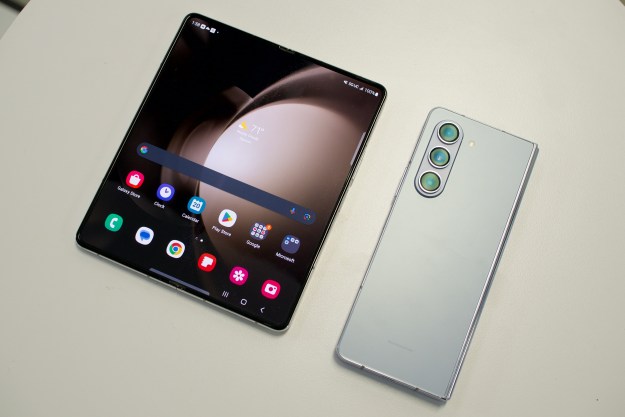
T-Mobile’s new FamilyMode system provides parents with the ability to control their children’s internet access on their smartphones and tablets wherever they are. With the addition of its “Home Base” device, parents can also expand the range of electronics they have control over.
To power FamilyMode using the complete ecosystem, parents need two things: access to the app and a small, cube-like “Home Base.” Once you open up the FamilyMode app (available for iOS and Android) on your phone, you can connect the base station to the app via an ethernet cable or pair it over your Wi-Fi network.
After you set up your Home Base, you’ll be able to pick and choose which devices you want to attach to your child’s profile straight from the app — and you aren’t limited to just smartphones and tablets connected to the network. You can choose to filter and monitor gaming consoles, laptops, Smart TVs, and any other device connected to that same Wi-Fi Network.
FamilyMode can be used without the Home Base as well, with just the FamilyMode app. This will allow parents to control only their kids’ phones and tablets wherever they’re located — on Wi-Fi or a cellular network.
Once the devices are chosen, parents can then set internet limits, filter inappropriate content, and choose which apps or sites their child has access to. Parents can reward their kids with bonus screen time through the app as well. They also have the ability to view which apps and sites they spend the most time on, along with their internet history.
While parents share an account, there’s room for up to 12 user profiles on the FamilyMode app. You can attach different devices to each child’s respective profile in order to make it easier to keep track of who is using a specific device. You’ll also have real-time location information so you can keep track of where your kids are as long as their phone is on them.
Children will have access to a page via the app, which allows them to see how much time is left on a specific site, platform, or app to help better manage their time. They’ll receive a notification letting them know when time is up and the internet will stop working completely. This works regardless of what carrier you’re on and it can be used with both iOS and Android.
But exactly how does it stop the internet from working? FamilyMode uses a local-loopback virtual private network (VPN) that ensures all internet traffic on the device is checked against the FamilyMode app before routed to the destination. So when the time is up, the Home Base can limit the internet and access to it based on what parents choose via the app.
Apple recently announced its own initiative to help reduce the amount of time we spend on our phones via a new feature in iOS 12 called Screen Time. A month prior, Google also announced a similar feature called Digital Wellbeing that will be baked into the next version of the Android P operating system.
With both Screen Time and Digital Wellbeing, it’s up the user to set their own limits when it comes to app timers, do not disturb settings, and accessing a summary of how much time they’ve spent on each app and also on their phones. But Apple and Google allow for a bit more leeway by giving users control of their own limits as long as the smartphone or tablet is in the palm of their hands.
As for T-Mobile FamilyMode, it will officially be available starting June 29 for T-Mobile customers. The Home Base retails for $100, but the carrier is offering it for $20 in honor of its launch. Meanwhile, the app will cost a flat fee of $10 per month, which includes all 12 profiles.
Editors' Recommendations
- T-Mobile plans explained: 5G, pricing, and features
- Google partnerships aim to help parents with their kids’ online safety
- Get 3% Daily Cash on Apple Card for any T-Mobile store purchase
- Samsung, T-Mobile to recycle an old phone for every S10e sold in the Netherlands
- TechDen’s gadget lockbox gives your kids’ screen time a time-out






